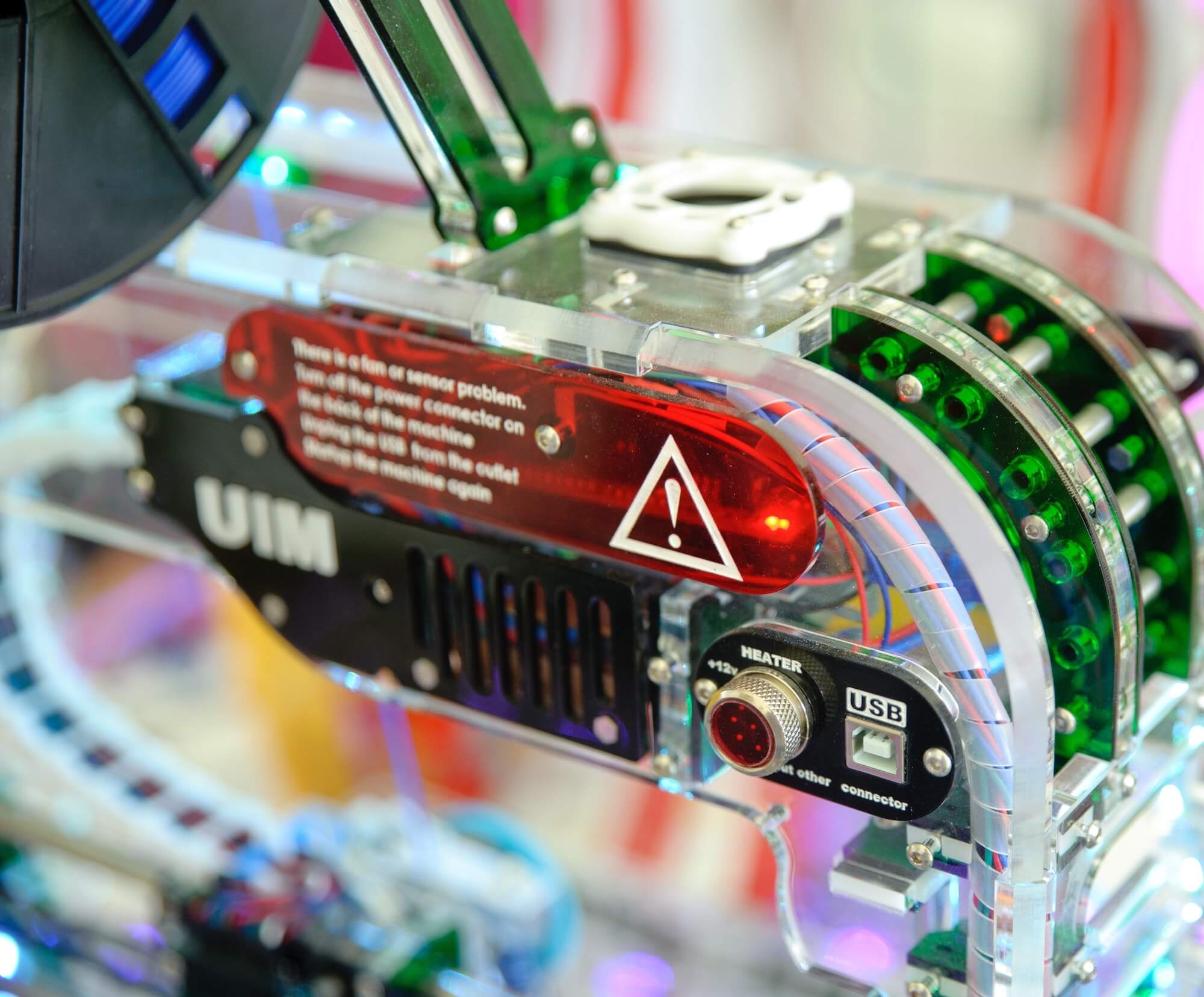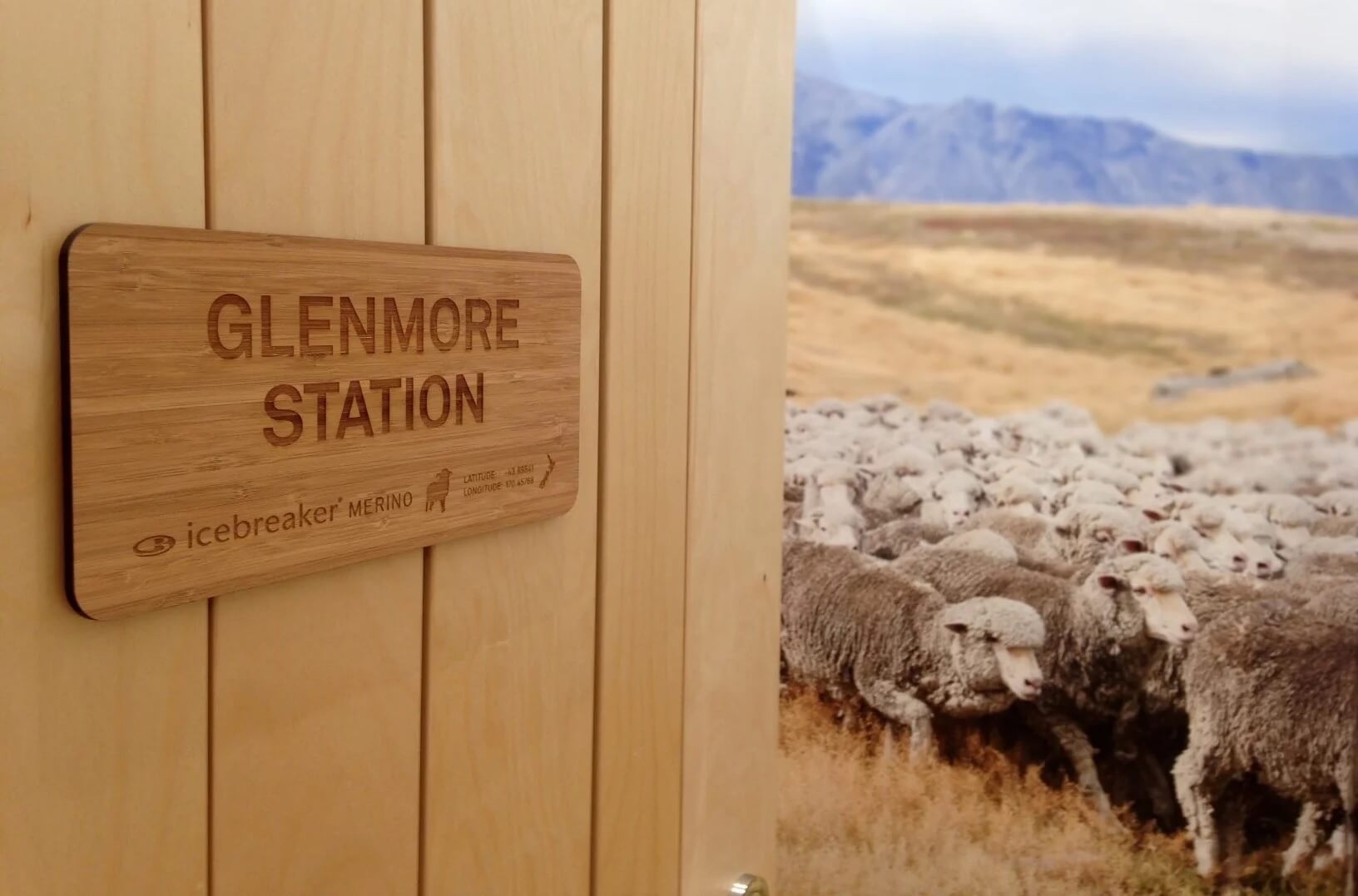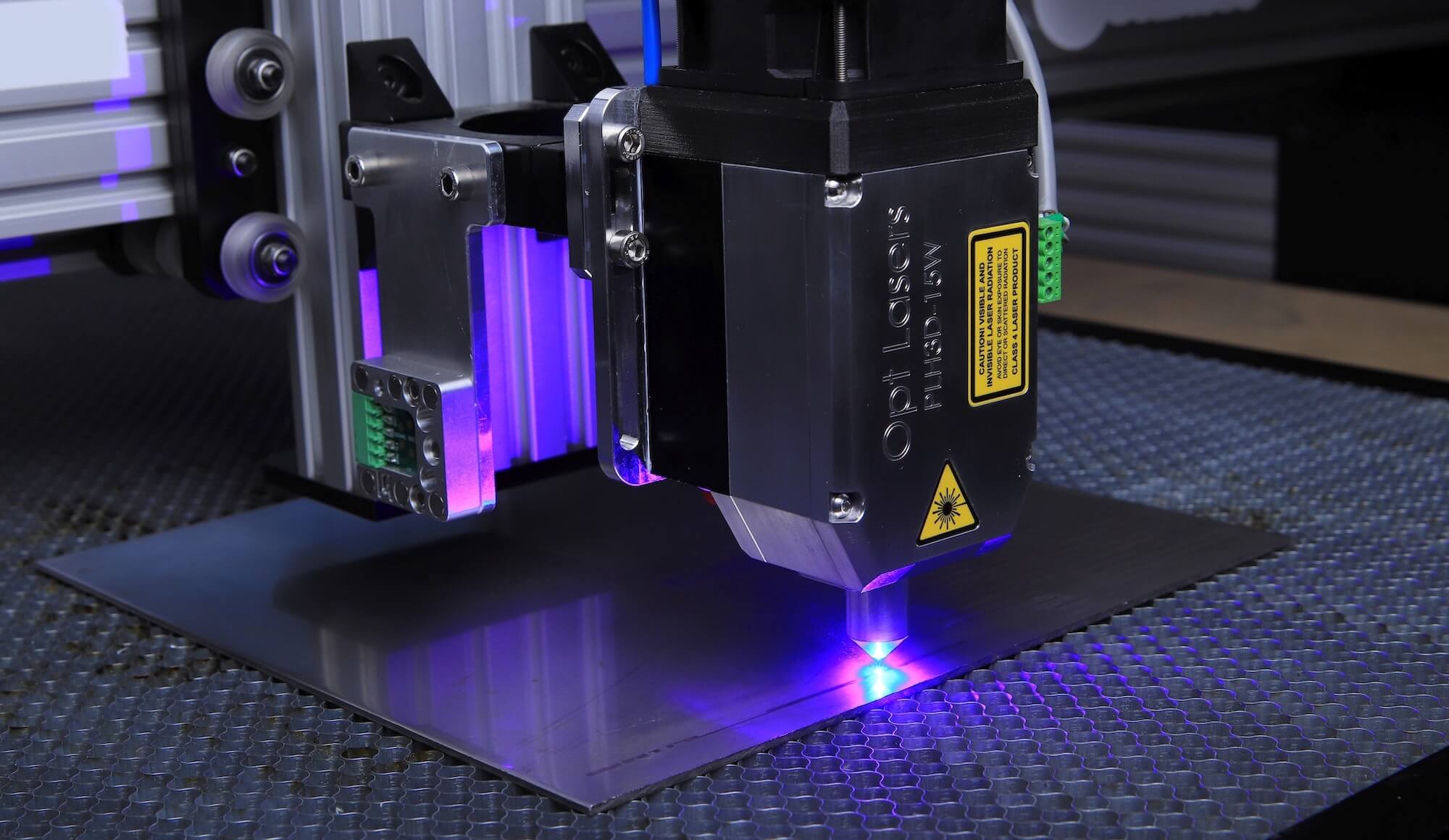Online custom laser cutting service, for startups & enterprises.
Prototyping & production laser cutting, using 450+ metals, plastics, composites, rubbers, foams & woods.
Contact sales engineerOur laser cutting capabilities
To ensure that we can provide laser-cut parts to the highest degree of quality, we provide different laser-cutting technologies, including CO2 and fiber, and each technology is specially matched to different materials to provide consistent results.
Regardless of the material, quantity, or size, all parts have a dimensional accuracy of ±0.13mm, a minimum feature size of 1x1mm, and a minimum laser kerf of 0mm. The maximum material thickness that our laser cutting stations can handle is 25.4mm (before the laser kerf becomes too large), the maximum dimension for parts made from any sheet material is 3000mm x 1500mm.
Our CO2 laser cutting capabilities
Min lead time
Same day
Max laser power
120W
Edge to edge cut tolerances
From ±0.23mm
Laser kerf
0 - 0.2mm
Material thickness
0.1 - 19.1mm
Max part size
3000 x 1500 x 12.7mm
Min part size
6 x 6 x 0.1mm
Min feature size
1 x 1mm
Part quantity
1 - 100,000
Shipping within USA
Free
Guaranteed tolerances
Our fiber laser cutting capabilities
Min lead time
Same day
Max laser power
12kW
Edge to edge cut tolerances
±0.13mm
Laser kerf
0 - 0.1mm
Material thickness
0.4 - 25.4mm
Max part size
3000 x 1500 x 25.4mm
Min part size
15 x 15 x 0.4mm
Min feature size
1x material thickness (min 1mm)
Part quantity
1 - 100,000
Shipping within USA
Free
Guaranteed tolerances
Sheet metal fabrication service
See our capabilities here
Tapping capabilities
Min lead time
Same day
Min material thickness
1.5mm
Max material thickness
19mm
Min thickness to bolt ratio
1.5x bolt diameter EG - M2 needs 3mm thick material
Min part size
25.4 x 38.1mm
Max part size
914.4 x 1164.8 mm
Available thread sizes
Countersinking capabilities
Min lead time
Same day
Min part size
25.4 x 101.6mm
Max part size
355.6 x 1164.8mm
Min material thickness
3.2mm
Max material thickness
19mm
Angle
82°, 90°, 100°
Minimum minor diameter
2.5mm
Maximum major diameter
19.1
Sheet cutting finishing
CO2 laser cutting
Fiber laser cutting
What is laser cutting?
Laser cutting is a subtractive manufacturing process that uses a laser beam to cut parts out of sheet material. However, laser beams don’t cut or melt, but instead, use their intense laser energy to vaporize material which prevents material from catching fire or degrading. Laser cutting machines are numerically controlled by computers (hence, making them CNCs), and this allows for laser cutters to produce any 2D (changing the commands will change the shape), and also makes laser cutters capable of providing a great degree of precision over many thousands of parts.
Due to the many advantages presented by laser cutters, they are extremely popular amongst engineers, especially for prototyping and low-volume production runs. Parts that would otherwise take hours to make on standard CNC mills can be done so on a laser cutter at a fraction of the cost in a fraction of the time.
Laser cutting materials
To help engineers choose the right material, we have over 450+ materials in stock, all of which are suitable for laser cutting and provide for precision capabilities. Our engineered materials means that the internal structure, consistency, and density is uniform, which creates parts whose exact weight, tensile strength, and center of mass is well defined. At the same time, engineered materials guarantee precision among different parts, even if they are manufactured at different times.
Of course, there will be applications that call upon very specific materials, and we accept custom material requests. If you require a custom material, let us know what the material is and where it can be purchased from so we can provide an accurate quote, but remember, we can only cut laser-safe materials.
How software-driven manufacturing helps your laser cutting
Manufacturing can be an extremely complex and tedious process; parts have to be designed correctly, those parts must be manufacturable, manufacturing data needs to be generated around that part, and those responsible for the parts manufacture need to understand the requirements of that part. Traditionally, this entire process would take many hours of valuable engineering time, and the slightest bit of miscommunication can result in a failed part.
Our software-driven manufacturing services help to simplify the laser cutting manufacturing service by separating engineers from the manufacturing and providing a set of online tools that provide instant quoting depending on the chosen material, part complexity, and part quantity. Our software tools mean that within minutes of uploading your design, you can choose your material, enter your order quantity, pay, and have your part put immediately into production.
Another major advantage to our software-driven manufacturing service is that all our other services, including finishing, are combined into a single online tool, allowing you to keep all part manufacturing under one roof. This significantly reduces the complexity of manufacturing while simultaneously protecting intellectual property.
But the most important feature of our software-driven laser cutting service is that it allows you to scale your project from prototype to production with a single click. Our laser cutting services do not distinguish between prototypes and market-ready parts, meaning that even single prototypes perfectly represent what you would receive when ordering parts in the thousands.
How much does laser cutting cost?
Laser cutting prices depend on numerous factors, including the material used by a part, the part size, the complexity of the part, and additional finishes.
When considering the machining costs, the longer it takes to cut out a part, the more expensive it will be. Simple shapes, such as rectangles and circles, are very quick to cut, which makes them cheaper to manufacture (as opposed to intricate parts with many cut-outs). Large graphical areas that use engraving take a long time to produce, making engraved parts more expensive. However, compared to other manufacturing methods (such as CNC milling), laser cutting is by far one of the most economical options available to engineers.
In addition to the low operating costs, laser cutters also lack tooling and unique customisation, meaning that they are significantly cheaper and easier to operate compared to CNC mills.
To demonstrate just how cost-effective laser cutting is, you can upload your part to our online software-driven manufacturing service, select your material, and see an instant price for that part in different quantities.
High-speed, precision laser cutting, guaranteed to last
When it comes to manufacturing, quality is essential; parts that cannot be made to a high degree of accuracy and precision are unreliable. However, it is also essential that parts are manufactured at speed to ensure that parts are economically viable. Our years of experience in the laser cutting field have enabled us to find the perfect balance between quality and speed, ensuring that our software-driven services provide customers with the parts they need at excellent prices.
To demonstrate our confidence in the parts we produce, all parts come with a 365-day guarantee, no matter the size of the order, the material is chosen, or the complexity of the part. This guarantee provides engineers a degree of confidence in the reliability of their parts, not just from the first order, but for every part in every order.
What parts can be made using laser cutters?
Laser cutting is excellent for creating faceplates such as those used on industrial equipment, control panels, user interfaces, musical instrument, and medical devices. This is especially true for the electronics industry, where almost all electronic devices are housed in some kind of enclosure.
Laser cutting is also ideal for creating small mechanical parts out of metal and plastic. For example, miniaturized gears used in complex mechanical devices can take advantage of the low-cost, high-precision capabilities of laser cutting.
Wood laser cutting is ideal for use in artistic applications where aesthetics are important. The high temperature of laser cutting result in cut edges having a charred appearance, and this can create strong contrasts in designs which are hugely popular with wood boxes, device enclosures, and pattern engravings. Metal laser cutting can be used to manufacture brackets and fittings, and the combination of our laser cutting service with our metal bending and finishing services allows for the creation of market-ready 3D parts.
Our laser-cut cardstock and textiles are ideal for fashion and crafts, which include product packaging, material insets, cards, promotional materials, and decals. Some textiles, such as felt, can even be used in some engineering applications, including seals and O-rings.

Faceplates for enclosures
Any electronic device that has user interfaces, connector ports, or cut outs will require an enclosure that has a flat face, and while this can be integrated into the case design, it is often easier to create a separate faceplate that is inserted into the enclosure. Making faceplates can be done with numerous different manufacturing techniques, but laser cutting offers the most economical option for prototypes and low volumes. The ability to provide clean cuts creates faceplates that are market-ready immediately after cutting, and the ability to also engrave graphics and text can remove the need for additional processing steps (such as direct printing and image transfers). Finally, laser-cut faceplates are extremely professional looking, something which can transform prototype products using off-the-shelf enclosures.

Artistic and luxury products
Wood laser cutting is ideal for use in artistic applications where aesthetics are important. The high temperature of laser cutting result in cut edges having a charred appearance, and this can create strong contrasts in designs which are hugely popular with wood boxes, device enclosures, and pattern engravings. This is commonly seen in the gifts industry as well as in luxury items that want to give the impression of a hand-made product. Furthermore, wood is an excellent for laser engraving as the charred cut lines are extremely easy to see. Finally, wood is easy to machine and work with, making it an excellent material choice when creating basic prototypes of new products where engineers may need to make adjustments.

Mechanical insets
Consumer electronic products that require a metal separator along the perimeter of the enclosure, or a piece of metal shielding to reduce EMI can also take advantage of laser cutting. While CNC machining can be used to create such parts, the strong mechanical forces exerted on thin sheets during machining can introduce warpage, and the long time taken by CNCs makes it highly expensive. Laser cutting, however, can make quick work of thin sheets of metal such as stainless steel and aluminum, and the quality of laser-cut parts allows for parts to be immediately used in products without the need for further processing.
Why you can trust Ponoko
Ponoko has years of experience in the laser cutting and engraving industries, having served over 33,000 customers and manufacturing over 2 million parts. Our 99.7% precision part quality record demonstrates our ability to manufacture parts reliably, and our 365-day guarantee ensures that all parts ordered will meet all requirements. No matter whether it’s a prototype or a market-ready production piece, every single part we manufacture is treated equally to the same exact high-quality engineering standards. As such, you can trust our laser cutting services for all parts, no matter the order.
Laser cutting FAQ
How fast is laser cutting?
What makes laser cutting advantageous?
What laser technologies exist?
What software can I use to create laser cut parts?
What files do laser cutters read?
Should I use vector or raster graphics with laser cutters?
How expensive is laser cutting?
Can 3D shapes be cut using a laser cutter?
What precision does laser cutting offer?
What is a laser kerf and should I be worried about it?
What challenges do laser cutting machines face?
What materials can be laser cut?
Are there materials that cannot be laser cut?
Is laser cutting suitable for mass production?
What are laser-cut living hinges and how can they be used to create 3D parts?
Does Ponoko deal with unusual and unique laser cutting projects?
Does Ponoko accept custom materials for laser cutting?
Need something other than laser cutting? Check out our other services
Laser cutters are great for making 2D parts, but they aren’t always the best option for engineers. If you are looking for something different, check out our other manufacturing services, which include 3D printing for 3D prototypes, plastic injection molding for mass production of plastic parts, CNC milling for high-precision engineering applications, and our complete PCB fabrication and assembly.
Order custom laser cut parts from your laptop, delivered same day.*
From $50 for just 1 … 93% off for 10,000.